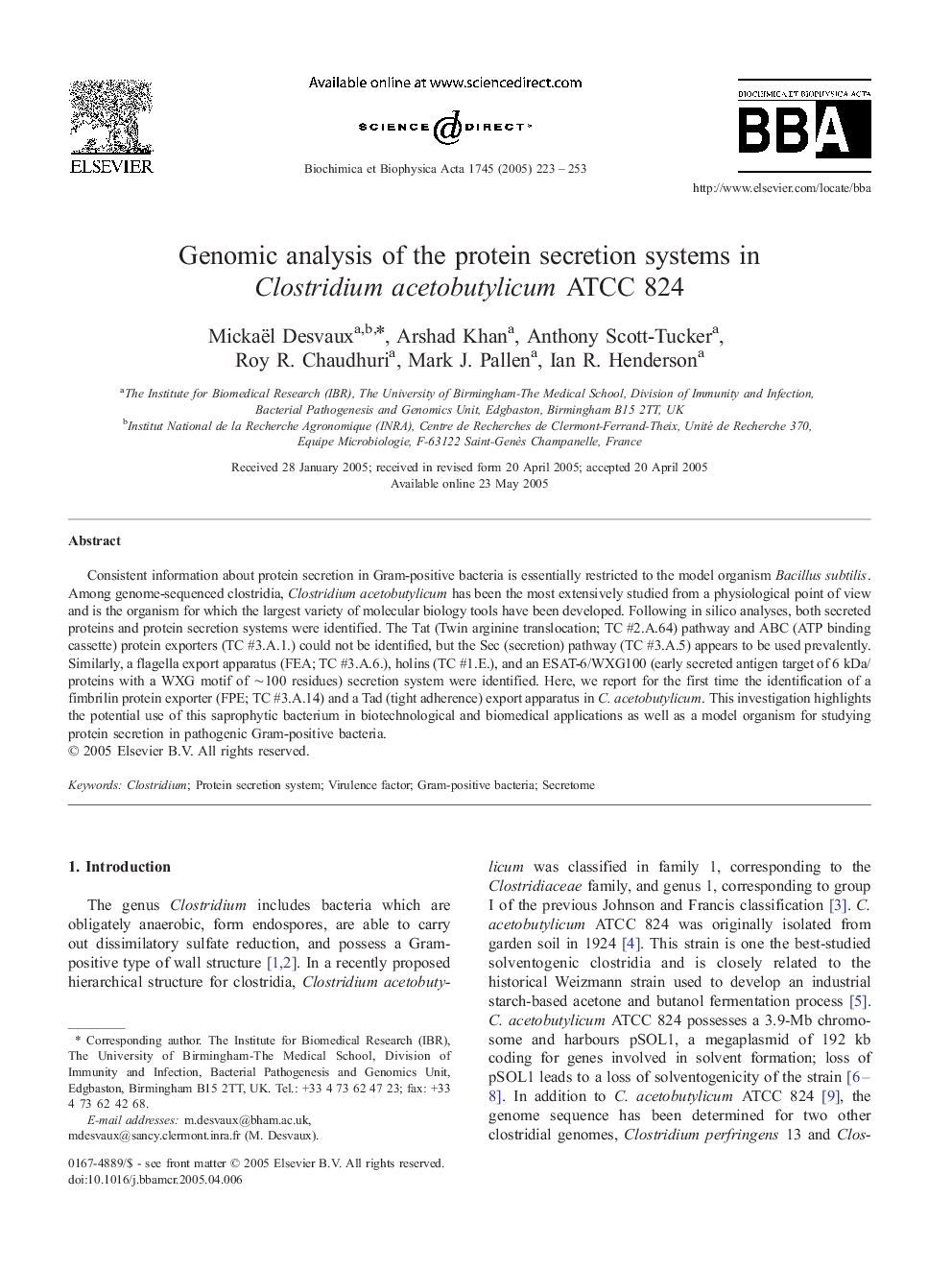| Article ID | Journal | Published Year | Pages | File Type |
|---|---|---|---|---|
| 10803115 | Biochimica et Biophysica Acta (BBA) - Molecular Cell Research | 2005 | 31 Pages |
Abstract
Consistent information about protein secretion in Gram-positive bacteria is essentially restricted to the model organism Bacillus subtilis. Among genome-sequenced clostridia, Clostridium acetobutylicum has been the most extensively studied from a physiological point of view and is the organism for which the largest variety of molecular biology tools have been developed. Following in silico analyses, both secreted proteins and protein secretion systems were identified. The Tat (Twin arginine translocation; TC #2.A.64) pathway and ABC (ATP binding cassette) protein exporters (TC #3.A.1.) could not be identified, but the Sec (secretion) pathway (TC #3.A.5) appears to be used prevalently. Similarly, a flagella export apparatus (FEA; TC #3.A.6.), holins (TC #1.E.), and an ESAT-6/WXG100 (early secreted antigen target of 6 kDa/proteins with a WXG motif of â¼100 residues) secretion system were identified. Here, we report for the first time the identification of a fimbrilin protein exporter (FPE; TC #3.A.14) and a Tad (tight adherence) export apparatus in C. acetobutylicum. This investigation highlights the potential use of this saprophytic bacterium in biotechnological and biomedical applications as well as a model organism for studying protein secretion in pathogenic Gram-positive bacteria.
Related Topics
Life Sciences
Biochemistry, Genetics and Molecular Biology
Biochemistry
Authors
Mickaël Desvaux, Arshad Khan, Anthony Scott-Tucker, Roy R. Chaudhuri, Mark J. Pallen, Ian R. Henderson,
